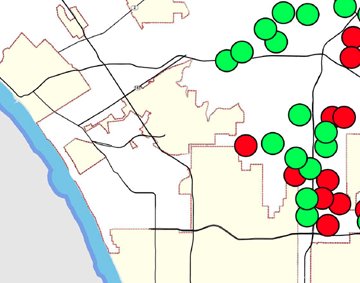 The City of Los Angeles is making a move to create more parks within walking distance.
The City of Los Angeles is making a move to create more parks within walking distance.
The Department of Recreation and Parks’ 50 Parks Initiative aims to create 50 public parks, including at least nine in South Los Angeles. Many of the South LA locations have not been finalized, though desired neighborhoods have been identified (see map).
Green dots represent sites that already have funds and the red dots are pending funding.
“The idea is to build parks in communities where people don’t have green spaces,” says Darryl Ford who works in the city’s Planning, Construction, and Maintenance Division. The initiative focuses on densely populated neighborhoods that lack access to recreational services. “We want as many people as possible to live a walkable distance to open areas.”
More parks in a reasonable walking distance is a community priority, according to an assessment survey the city conducted in 2009.
The 50 Parks Initiative hopes to stabilize neighborhoods and property values by providing “innumerable physical, social, health and environmental benefits to those communities,” according to a press release from The Department of Recreation and Parks.
“This project really addresses the direct needs of a community,” says Ford.
The pocket parks will be open spaces. The majority wil be less than an acre and many will fit on residential lots. The parks will provide green space and recreational facilities. The city also plans to supply each with security features, such as gates and cameras.
Residents near Vernon and Central Avenues in South L.A. were welcoming plans for a pocket park in their neighborhood. The Los Angeles Times reported on December 10, 2011 that the city spent more than $600,000 designing and building the Vernon Branch Library Pocket Park, but residents never got to enjoy it. According to the LA Times, the Los Angeles Unified School District is using the property as part of a new school campus now being built. Apparently, neither the city nor LAUSD knew of each other’s plans.
The funding comes from non-profits and a variety of public sources, including bonds and grants.
As of now, 47 sites have been identified, 23 of which are already funded. Some of the lots are development sites; others are donated or formally foreclosed homes. The city is considering more than 50 lots and doesn’t know what the final count will be.
This is an example of a pocket park in East LA. This park will be built on a residential lot where a house currently stands.
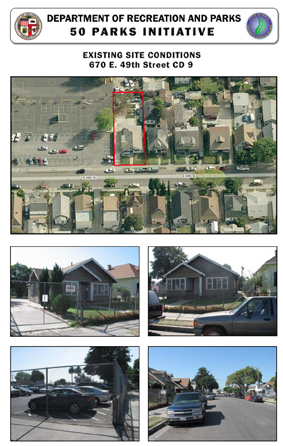
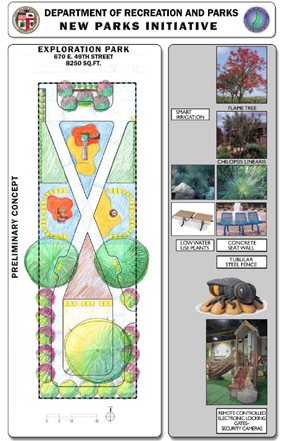
This is an example of a pocket park at Wilton Place in Torrance.
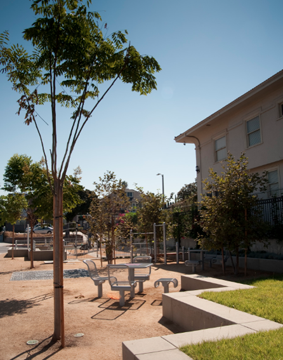
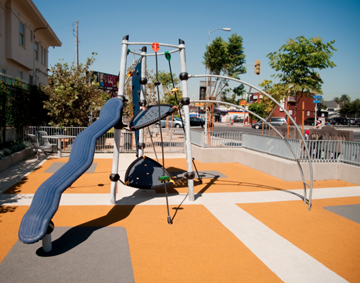









 Last August, the Los Angeles School District rolled out its revamped lunch menu in an effort to reduce students’ intake of sugar, calories, fat and sodium.
Last August, the Los Angeles School District rolled out its revamped lunch menu in an effort to reduce students’ intake of sugar, calories, fat and sodium.  Some of the most popular rap music in the world comes from South Los Angeles. LA Weekly published a list of its top 20 LA Rap albums of all times. Not surprisingly, South LA artists were prominent. Check out the top five.
Some of the most popular rap music in the world comes from South Los Angeles. LA Weekly published a list of its top 20 LA Rap albums of all times. Not surprisingly, South LA artists were prominent. Check out the top five.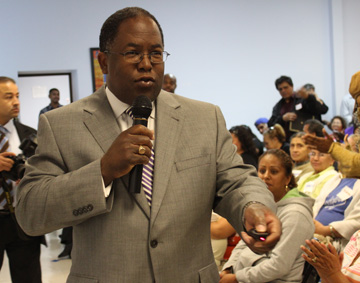 More than 300 South Los Angeles residents, politicians and health care providers packed into the St. John’s Well Child & Family Center Wednesday night to take a stand against potential cuts that would make health care less accessible to thousands of residents.
More than 300 South Los Angeles residents, politicians and health care providers packed into the St. John’s Well Child & Family Center Wednesday night to take a stand against potential cuts that would make health care less accessible to thousands of residents. 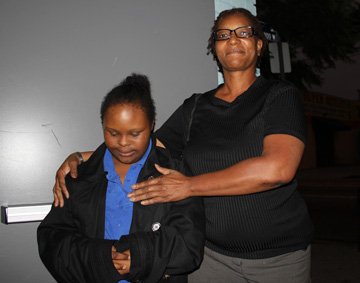 Many attendees would be directly affected if clinics lost funding. Hattie Walker’s daughter Khadiya Walker has down syndrome and autism. Walker’s work doesn’t insure her and she pays medical costs out of pocket. Because of Khadiya’s special needs, Walker depends on health care funding. If costs were to increase, that would mean less food on the table.
Many attendees would be directly affected if clinics lost funding. Hattie Walker’s daughter Khadiya Walker has down syndrome and autism. Walker’s work doesn’t insure her and she pays medical costs out of pocket. Because of Khadiya’s special needs, Walker depends on health care funding. If costs were to increase, that would mean less food on the table.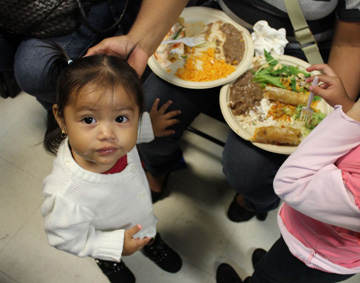 “I believe that everyone has a right to get their medicine no matter what your income level is, your education level is,” Brand said. “The thing about it that is it could be your mom, your sister, your uncle, it could be someone in your family. Would you want to see them waste away or die because they don’t have money?”
“I believe that everyone has a right to get their medicine no matter what your income level is, your education level is,” Brand said. “The thing about it that is it could be your mom, your sister, your uncle, it could be someone in your family. Would you want to see them waste away or die because they don’t have money?”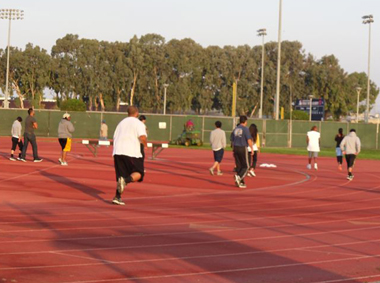 The Compton community can now benefit from the recent reopening of the Compton Community College District track and football field.
The Compton community can now benefit from the recent reopening of the Compton Community College District track and football field. 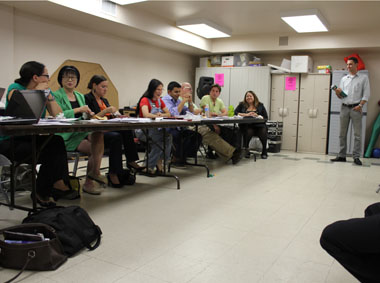 Martin Luther King Jr. Park was hopping on Thursday night. The smell of barbeque drifted through the air, teenagers created an impromptu dance floor to rap music, and light shined down on a baseball game.
Martin Luther King Jr. Park was hopping on Thursday night. The smell of barbeque drifted through the air, teenagers created an impromptu dance floor to rap music, and light shined down on a baseball game. 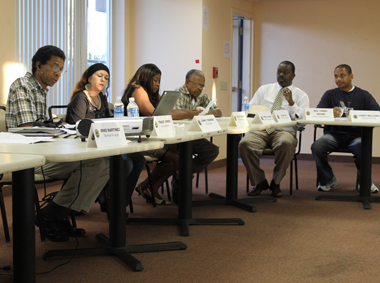 The hot afternoon sun dropped low over Western Avenue as members of the Central Area Neighborhood Empowerment Council filed into the community room of the Amistad Plaza Apartment.
The hot afternoon sun dropped low over Western Avenue as members of the Central Area Neighborhood Empowerment Council filed into the community room of the Amistad Plaza Apartment. 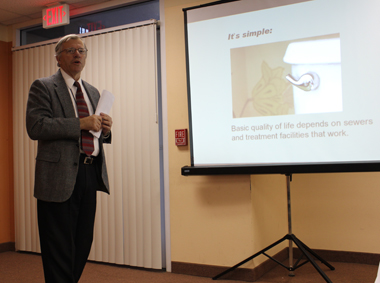 2. Water costs are going to rise by approximately $32 per year for a single-family home. Bob Irvin, Director of Systems at the Bureau of Sanitation, gave a presentation explaining that many of the city’s sewers are operating on borrowed time – the average lifespan of a sewer is 80 years, and 30 percent of the city’s sewers are older than that. Irvin said the rise in cost is necessary to ensure quality drinking water is available and no sewers overflow. To drive the point home, he showed pictures of Los Angeles manholes gurgling human waste.
2. Water costs are going to rise by approximately $32 per year for a single-family home. Bob Irvin, Director of Systems at the Bureau of Sanitation, gave a presentation explaining that many of the city’s sewers are operating on borrowed time – the average lifespan of a sewer is 80 years, and 30 percent of the city’s sewers are older than that. Irvin said the rise in cost is necessary to ensure quality drinking water is available and no sewers overflow. To drive the point home, he showed pictures of Los Angeles manholes gurgling human waste. 




